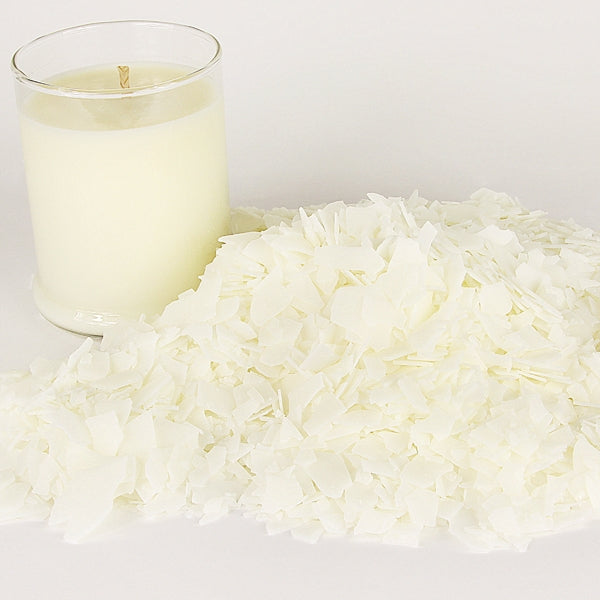Improve Your Living Space with Glamorous Soy Candles and Home Fragrance
Improve Your Living Space with Glamorous Soy Candles and Home Fragrance
Blog Article
From Wick to Wax: Comprehending the Chemistry Behind Soy Wax Candles and Their Environmental Impact
As we illuminate our rooms with the warm glow of candle lights, there lies a realm of detailed chemistry behind the apparently easy act of lighting a soy wax candle. The choice in between soy and paraffin wax prolongs beyond mere aesthetics, delving into the world of ecological influence and the extremely composition of the products. Comprehending the molecular structure of soy wax and its combustion procedure clarifies the emissions launched right into our surroundings. Join us as we unwind the clinical complexities behind soy wax candles and discover their ramifications on our environment.
Soy Wax Vs. Paraffin Wax
When contrasting soy wax and paraffin wax for candle production, it is vital to comprehend the distinct characteristics and advantages of each material. Soy wax is a natural, renewable energy originated from soybean oil, making it eco-friendly and eco-friendly - soy candles. In comparison, paraffin wax is a result of petroleum refining, which increases concerns concerning its environmental influence and sustainability
Soy wax candles melt cleaner and release less soot compared to paraffin wax candle lights, making them a healthier option for interior air high quality. In addition, soy wax has a lower melting factor, permitting a longer-lasting candle light that distributes scent much more effectively. Paraffin wax, on the other hand, has a tendency to melt faster and less cleanly, possibly releasing hazardous chemicals right into the air.
From a sustainability viewpoint, soy wax is preferred for its biodegradability and sustainable sourcing, straightening with the expanding consumer preference for ecologically mindful products. While paraffin wax has actually been a traditional choice in candle light making because of its affordability and convenience of use, the shift towards eco-friendly choices like soy wax is obtaining momentum in the market.
Chemical Structure of Soy Wax

Burning Process in Soy Candles
The chemical structure of soy wax straight influences the combustion process in soy candle lights, influencing elements such as burn time, scent launch, and environmental impact. When a soy candle light is lit, the heat from the fire melts the wax near the wick.
The combustion performance of soy candles is affected by the purity of the soy wax and the quality of the wick. A clean-burning soy candle with a correctly sized wick will minimize and generate a constant flame soot formation. This not just expands the melt time of the candle however additionally boosts the launch of scents. Additionally, soy wax candles have a lower ecological effect contrasted to paraffin candle lights because of their biodegradable and renewable nature.

Environmental Advantages of Soy Wax

Considered a sustainable alternative to standard paraffin wax, soy wax supplies noteworthy environmental advantages that make it a prominent choice among eco-conscious consumers. Soy wax burns cleaner and generates less residue than paraffin wax, contributing to far better indoor air high quality and decreasing the requirement for cleaning and maintenance. On the whole, the ecological advantages of soy wax align with the expanding need for environmentally friendly and lasting products in the market.
Recycling and Disposal Factors To Consider
Reusing and proper disposal of soy wax candle lights play an important function in preserving ecological sustainability and minimizing waste in areas and families. When it concerns reusing soy wax candle lights, the initial step is to make sure that the candle has actually burned totally. This can be achieved by enabling the candle to shed till the wick is no more functional, and visit this site after that letting the staying wax cool and strengthen. Once the wax has actually strengthened, it can be thoroughly removed from the container.

In terms of disposal, if recycling is not a choice, soy wax candles are eco-friendly and can be securely taken care of in the majority of household waste systems. It is constantly suggested to check with regional reusing facilities or waste monitoring services for like this specific standards on candle light disposal to guarantee appropriate handling and ecological security.
Conclusion
Finally, the chemistry behind soy wax candles exposes their environmental benefits over paraffin wax candle lights. Soy wax, originated from soybean oil, burns cleaner and creates much less soot see this page when contrasted to paraffin wax. The combustion procedure in soy candle lights is much more efficient, resulting in a much longer and much more also burn. Additionally, soy wax is eco-friendly and sustainable, making it an extra sustainable choice for candle light production. Recycling and proper disposal of soy wax candle lights additionally add to their environmental effect.
When contrasting soy wax and paraffin wax for candle making, it is essential to comprehend the distinct qualities and advantages of each product (crystal soy candles).Soy wax candle lights melt cleaner and produce less residue compared to paraffin wax candle lights, making them a healthier selection for interior air quality.Thought about a lasting choice to conventional paraffin wax, soy wax provides significant ecological advantages that make it a popular choice amongst eco-conscious consumers. Soy wax burns cleaner and creates less soot than paraffin wax, adding to better interior air quality and lowering the demand for cleaning and upkeep.In final thought, the chemistry behind soy wax candles reveals their environmental benefits over paraffin wax candle lights
Report this page